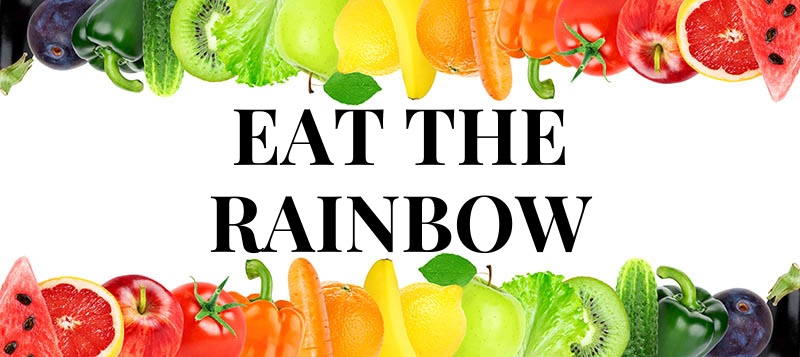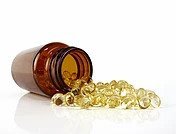|
Are you interested in knowing how to “hack” Thanksgiving? Well you have come to the right
place! Holidays are time consuming and for many are very stressful! Here are some simple tips on how to make the big day a breeze. Hack it, How to: 1. Set the table the day before. This is always something my family did and it made life so much easier! 2. Prep your vegetables ahead of time. Slice, dice and chop away. Storing each in a container so you can heat, dump and go. - Need to turn it up a notch? Make them the day before but leave them a little firmer so when you reheat them they are perfectly cooked. 3. Crock pots are a beautiful thing. You can make everything including the turkey in one of these! 4. Skip the potato peeler. Yes, potato skin of all potato varieties is perfectly edible and is a great source of fiber. Just be sure to give them a scrub before you boil them. Smashed red skinned garlic mash anyone? YUM. 5. If your friends and family are like mine, they are always asking what they can bring. A great tip is to give everyone a dish to prepare. You take care of the bird and literally the rest comes to you. 6. Make sure you bird is defrosted in time. Set alarm reminders on your phone to make sure you put that bad boy in the refrigerator in time! The USDA recommend one day for every 4-5lbs of weight. So if your turkey is 24lbs it will take about 6days to thaw. Now that’s a lot of turkey!! Nutrition Coach Jackie Mistretta
0 Comments
As spooky season is quickly approaching many of us are planning costumes,
parties and most importantly what candy to buy for trick-or-treaters! Even if you are not a big candy person, this is the one time of year many of us (including myself) indulge. Many past Halloweens I have found myself in front of a scary movie, surrounded by empty candy wrappers. While the hours pass and my stomach ache only intensifies I think to myself “whelp we did it again.” So here are some of the ways this year I plan to keep myself in check:
Written by Jackie Mistretta Nutritional Diet Coach  W Are you feeling nervous about staying on track when you are invited to Holiday parties? Here is a miniature party survival guide to help you stay on track:
Pumpkin Recipes! For my pumpkin lovers this is your time of year friends! From baked goods to the all famous pumpkin spice late, it seems everything is pumpkin! If you are like me and you dislike “fake” pumpkin flavor check out the recipes below that use REAL pumpkin in unique and healthy ways. Oatmeal Pumpkin Pancakes Ingredients: 3/4C canned pumpkin puree 2 eggs 2/3C milk (or alternative) 2 tsp. vanilla extract 1 TBSP sweetener or choice (maple syrup, honey, agave) 1.5C oats (rolled oats recommended) 2 tsp. baking powder ¼ tsp. salt ¼-1/2 tsp. spices of choice (cinnamon, ginger, clove, all spice, nutmeg, etc.) Instructions: 1. Combine and mix all the following ingredients into a large bowl. 2. Once ingredients are mixed well, lightly butter a large pan or griddle. 3. Place roughly 1/3C of the pancake mixture onto the cooking surface and cook for 2-3 minutes. Flipping half way through. 4. Serve with maple syrup, top with nuts (optional) and enjoy! These pumpkin oatmeal pancakes are high in fiber, delicious and will make your home smell like fall! Thai Pumpkin Soup Ingredients: 4 TBSP. oil of choice 2C pumpkin puree 1 large onion (yellow, white, Spanish) 4-6 cloves of garlic ½ tsp. salt 4C broth (chick, vegetable, etc.) 1/2C coconut milk or cream (milk or heavy cream optional) 2 TBSP. sweetener of choice 1 TBSP curry powder ¼ tsp. cayenne pepper ¼ tsp. chili powder Toppings: roasted pumpkin seeds, sour cream, cilantro, green onion, etc. Instructions: 1. In a large soup pot cook the chopped onion and garlic in oil until fragrant. 2. Next add the pumpkin puree and spices, stirring to combine. 3. Next add desired stock of choice, followed by coconut milk. 4. Allow to simmer for half an hour or until the soup has thickened slightly. 5. Serve in a bowl and topped with desired additions. Roasted pumpkin grain salad Ingredients: Roasted pumpkin (kent, sugar, etc.) *See link for how to break down a pumpkin. 1 large onion 4 garlic cloves Salt & Pepper 1 tsp. ground coriander 1 tsp. ground cumin 1 TBSP. olive oil 2 TBSP sweetener of choice. ½-1C quinoa or grain of choice. Pomegranate seeds Pumpkin seeds Kale (or greens of choice) Feta cheese Lemon vinaigrette: 1/4C lemon juice 1 small clove of garlic 1 tsp. Dijon mustard Salt and pepper to taste ½ tsp. sweetener of choice 1/4C oil of choice Instructions: 1. Split the pumpkin open and clean accordingly. 2. Cut the pumpkin, onion and garlic into large chunks, placing onto prepared cookie sheet. 3. Drizzle the vegetables with olive oil, coriander, cumin, salt, pepper and sweetener of choice and place into a 425 degree oven for about 20-25 minutes, stirring half way until the vegetables are tender. 4. In a large sauce pan prepare grain of choice according to box instructions. 5. Wash, remove the stem and tear kale leaves. 6. Place grain mixture into a serving dish, top with kale leaves, placing vegetable mixture on top. 7. Finish with a drizzle of lemon vinaigrette, pomegranate seeds, pumpkin seeds and feta cheese. Roasting pumpkin link: https://www.thekitchn.com/how-to-roast-a-pumpkin-224473 Written by Jackie Mistretta Author: Jackie Mistretta BS, MSCN, HicksStrong Nutritional Coach
It's hard to believe that it is already nearing the end of January! I could have sworn that just last week there were fire works, popped corks and parties to celebrate the New Year. Gyms have filled up quickly, diets have been started, and old habits have been changed. Social media is filled with every intention of positivity, change and “new year, new me” vibes. The tradition of New Years resolutions is as old as time. According to Jones-Schenk, this tradition dates back to the Roman Empire where Julius Caesar established a new calendar every January. (2022) So what happens as the weeks continue? The gym numbers decrease, the fast food gets reincorporated and those old habits seem to pop up again. Now this isn’t true for all. But for many, we seem to quickly return to our old ways. In the civilian world, it’s no big deal. We don’t meet our goals, who cares? But what about the active duty members and veterans? The military holds its members to a certain standard. Whether its job performance, organization, PT or regulations, there is always an added pressure. This learned behavior is engrained in all members and most continue to uphold this standard even when they leave. Because of this added pressure, there are increased feelings of failure, depression, and frustration in these individuals. As a result, there is often food restriction, purging, over exercising and dieting to meet their goals. According to the United States Government Accountability Office, eating disorders in the military are more common then not. Often resulting in “co-occuring” conditions such as anxiety, depression and PTSD. (GAO, 2020) This impact on both physical and mental health can cause significant issues and danger with readiness of a service member. So, why do diets NOT work? They make you miserable! I mean, who wants to deprive themselves of the things they want and love? Not me!
Okay, so if diets do not work, then what? One of the number one reasons why diets do not work is because they fail to address the root cause of the issue. Think of a diet like a Band-Aid, it is simply a quick fix. Engaging in poor habits such as over exercising, restricting intake and following extreme diet plans only set’s an individual up for failure. If you are feeling lost and wondering what to do next, you are not alone. At #HicksStrong Inc. we offer both mental health and nutritional services to help support our active duty and veteran hero’s. Please reach out and request nutritional services with yours truly. I will teach you the skills you need in order to achieve your goals and never have to go on another diet again! Citations: https://www.tandfonline.com/doi/full/10.1080/1369118X.2021.1983003 https://journals.healio.com/doi/full/10.3928/00220124-20211210-04 https://www.statista.com/statistics/378105/new-years-resolution https://www.thediabetescouncil.com/why-do-most-diets-fail/ https://www.health.harvard.edu/blog/when-dieting-doesnt-work-2020052519889 https://www.gao.gov/products/gao-20-611r In this article we will discuss the importance of eating a colorful diet. The term “eat the Rainbow” is a simple and easy way to remember to fill your plate with a variety of colors! Fruits and vegetables are rich in vitamins, minerals, fiber, antioxidants and phytochemicals. Often why these foods are called “super foods” which is really just a fancy way of saying these foods are good for you. Incorporating more fruits and vegetables not only can increase your nutrient intake, but it can also help with the regulation of blood pressure, blood sugar, cholesterol, GI functions and body weight. Not to mention that they are very low in calories and have no fat. Who doesn’t love that?
Vitamins and Minerals. Some of the vitamins and minerals found in fruits and vegetables aid in the function of blood, vision, nervous system, nail growth and even healing that scrape on your knee. Do you remember your mom telling you as a kid to eat your carrots because they help you see at night? Well she wasn’t wrong, vitamin A or carotene is found in yellow-orange pigmented fruits and vegetables. A deficiency in this vitamin can cause nighttime blindness. Vitamin E and K can affect your bodies ability to clot your blood. If you are on a blood thinner make sure to talk to your doctor before you pretend to be Popeye the Sailor Man. These vitamins can be found in kale, spinach, broccoli and healthy oils like olive and sunflower. As for vitamin C, the history dates all the way back to the 1490s when Portuguese sailors presented with bleeding gums and poor wound healing from a lack of vitamin C! Once they determined this was from a vitamin C deficiency, sailors would travel loads of lemons and limes on board. Calcium and Iron aid in many processes in the body, including muscular functions and even can help prevent anemia. Believe it or not dark leafy greens are extremely rich in both iron and calcium. So remember to load up on those dark greens the next time you are eating dinner. What are Antioxidants and Phytochemicals? Antioxidants are found in fruits and vegetables help prevent cellular damage from free radicals. Free radicals are unstable molecules that can cause cellular damage leading to aging and chronic disease.
Sources:
Tips and Ideas. 1. Did you know that Rainbow Carrots taste the same as orange? This is true for most fruits and vegetables that come in a variety of colors.
3. Tired of eating salad? Try adding vegetables into a fruit smoothie.
Sources: (AHA) American Heart Association. “Eating the Rainbow-Challenge Yourself to Try Fruits and Vegetables of Different Colors.” Empower your cart. Retrieved on March 24th, 2021 from, https://www.heart.org/idc/groups/heart-public/@wcm/@fc/documents/downloadable/ucm_466712.pdf BreastCA.org “Foods Containing Phytochemicals” (February 5th, 2015). Retrieved on March 24th 2021 from, https://www.breastcancer.org/tips/nutrition/reduce_risk/foods/phytochem Collins, K.., Collins, K., & *, N. (July, 24th 2020.) “Difference between antioxidants and phytochemicals” (AIFCR) American Institute for Cancer Research. Retrieved on March 24th 2021 from, http://www.aicr.org/resources/blog/healthtalk-whats-the-difference-between-an-antioxidant-and-a-phytochemical/ Jean Inman’s Review of Dietetics. RD Exam Study Guide. (2017). Vitamins and Minerals. Retrieved on March 23, 2021. Louis ED. The History of Scurvy and Vitamin C. Yale J Biol Med. 1987;60(1):59-60. Oregon State University. Linus Pauling Institute, Micronutrient Information Center. “Resveratrol” Retrieved on March 24th 2021 from, https://lpi.oregonstate.edu/mic/dietary-factors/phytochemicals/resveratrol#sources Pérez-Jiménez J, Neveu V, Vos F, Scalbert A. Identification of the 100 richest dietary sources of polyphenols: an application of the Phenol-Explorer database. Pub medicine. Eur J Clin Nutr. 2010 Nov;64 Suppl 3:S112-20. doi: 10.1038/ejcn.2010.221. PMID: 21045839. Retrieved on March 23, 2021 from, https://pubmed.ncbi.nlm.nih.gov/21045839/ In this article we will discuss the importance of vitamin D intake through proper nutrition and the beneficial effects on mental health. Vitamin D is one of the most common vitamin deficiencies in the United States. Affecting “more than one billion children and adults worldwide” as a result of inadequate sun exposure, dietary intake and in some cases poor vitamin D absorption. (Holick, 2017). Where Can I find Vitamin D? Vitamin D is found in various food sources such as fortified foods, or foods that have nutrients added to enhance overall nutritional quality. Some examples include:
One of the most common ways of obtaining vitamin D is though sunlight exposure, accounting for roughly 90% of ones vitamin D requirements! Contrary to popular belief, individuals of all skin pigmentation still need to wear sunscreen to protect themselves from the harmful Ultraviolet lights that come from the sun. What may be making me deficient? Some inhibiting factors include:
These same lifestyle factors have shown to have negative effects on mental health. In the brain, the neurotransmitters Dopamine and Serotonin (the feel good and happiness hormones) work with vitamin D to regulate mood and brain function. Low levels have shown associations with Depression, Schizophrenia, Alzheimer’s, Fibromyalgia, Secondary-hyperparathyroidism, and SAD. Seasonal Affective Disorder or “SAD” for example, is a common mood disorder, related to decreased sunlight exposure, in the fall and winter months. This is especially common in people living in colder regions of the United States. (Greenblatt, 2011.) What can YOU do? Vitamin D has not only proven to have a beneficial role in regards to our mental health, but our physical health too. Vitamin D aids in the formation and maintenance of bone, teeth and muscular function.
Remember, before taking any supplements always check with your Doctor for adequate dosage and usage! November 9, 2020. By Jackie Mistretta, Nutritional Coach.
Sources:
|









